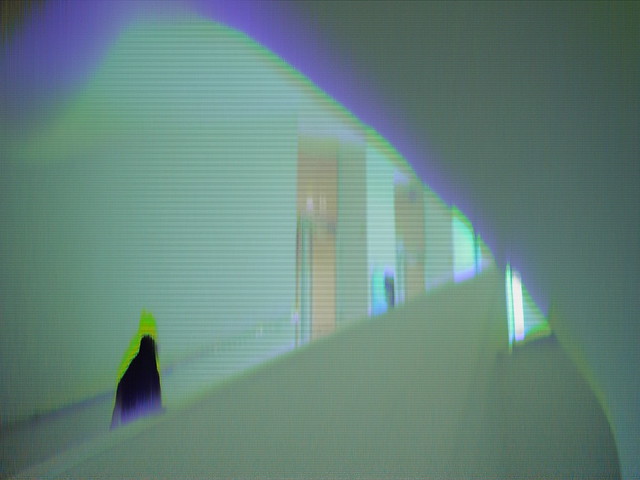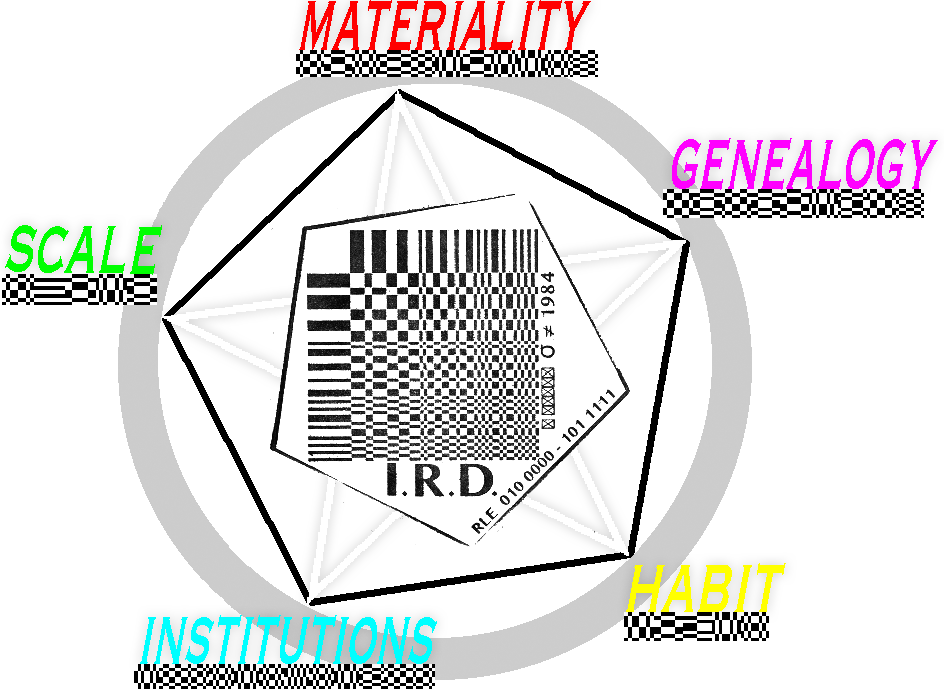
Felipe Melhado is a student in Brazil who is one of (quite a few) people writing their master thesis on glitch art right now. He emailed me with a couple of questions for his thesis that I thought were very interesting to answer, here they are = )
- When and how did you get in touch with glitch art? Why does it interest you?
The first work of digital glitch art that I remember triggered me to think about this genre was in the exhibition World Wide Wrong by Jodi in 2005. After seeing this work I started reading and writing about glitch. Just a little bit later I also started making my own work - because I think particular research in a subject like glitch art can benefit a lot from experiences / a practical point of view.
- How does glitch art appear in your artistic production?
When I first started with glitch, or digitally broken imagery I was just tinkering. I was trying out different forms and seeing how different files, softwares and hardwares react to different, abnormal ways of handling them. This year I tried to sum up a part of that earlier work in the Vernacular of File Formats.
Later I took this kind of work one step further and started to incorporate my theoretical writings in this kind of research - this is when I also wrote the glitch studies manifesto and started making my acousmatic videoscapes.
Right now I am trying to use glitches in more complex ways and not show them as an esthetic alone - I try to tell stories with them. An example of this is for instance the Collapse of PAL, which is an AV performance about the ending of the television signal PAL (which I believe you also used in Brazil).
- What is the conceptual intention found at your artworks when you use the digital errors aesthetic?
There is not one conceptual intention - I think there is many ways to use the glitch and I always try to find new ways. But I do think there is one overarching premise:
I am trying to research the tipping point of failure - which i tried to illustrate in the vernacular of file formats - and which basically means a research into how errors become newly accepted, standardized forms or styles. How do the many different glitches transform into filters of big commercial softwares like adobe premiere and after effects? I try to keep an eye on the process of standardization and commodification of glitch.
- Which procedures do you use to achieve the digital errors?
Not one, it really depends on the hard or software I am working with at that point.
- Why do you think the error is interesting to so many digital artists?
Error is a very classic subject that has played a role in art since .. "forever"; Artists often play with tensions and breaks to show some generalizations of society (which I wrote more about in the in-between manifesto).
Modern culture is in my opinion heavily depending on paradoxes and binary oppositions: open/closed, proprietary/free, hard/software, 0/1, right/wrong, S/Z, just to name a few. This is why there are so many categories for the artist to break - and why so many artists (quite easily) feel a need to fight, break explore and express themselves using these oppositions.
The glitch is something that is inbetween all these things; it sort of functions as a membrane that constitutes new categories between absolutes. This is also why I think the / symbol should be the sign for glitch.
- Do you have any references of artists who explore the error as an aesthetics, not necessarily using digital glitches?
(I am answering your question as if you wrote glitch instead of error - i think the two might have slightly different meanings and histories -- which is maybe something to think about).
The glitch incorporates many different understandings; error, imperfect, mistake or failure, and all of these concepts have lineages that go back as early as human cultures evolved.
Cultures are defined by norms and specific ways of operating but also by errors or misbehaving (I think about Foucault and his writing about the madman outside of a particular culture, who is as important in defining a culture as the normal man of that culture :: they are two sides of the same coin).
Artists often play with tensions and oppositions. The error is therefore a natural subject in art, that you can recognize in many early and later artforms.
But I would also not want to exclude early Greek or Roman art in which the artists led themselves by the cracks (the imperfections) of the marble..
There is a whole tradition of artists researching the materiality (and the particularities or imperfections) of their art - Vertov playing with cameras, Len Lye and Brakhage with celluloid or Paik with CRTs, just to name a view that use film, but I could do the same for photography, sound, architecture carpets or glass.
It really depends on how you define your beginning concept; the term glitch - as a political strategy, something purely digital or a aesthetical, economical or material research.. there are endless histories of glitch.



No comments:
Post a Comment